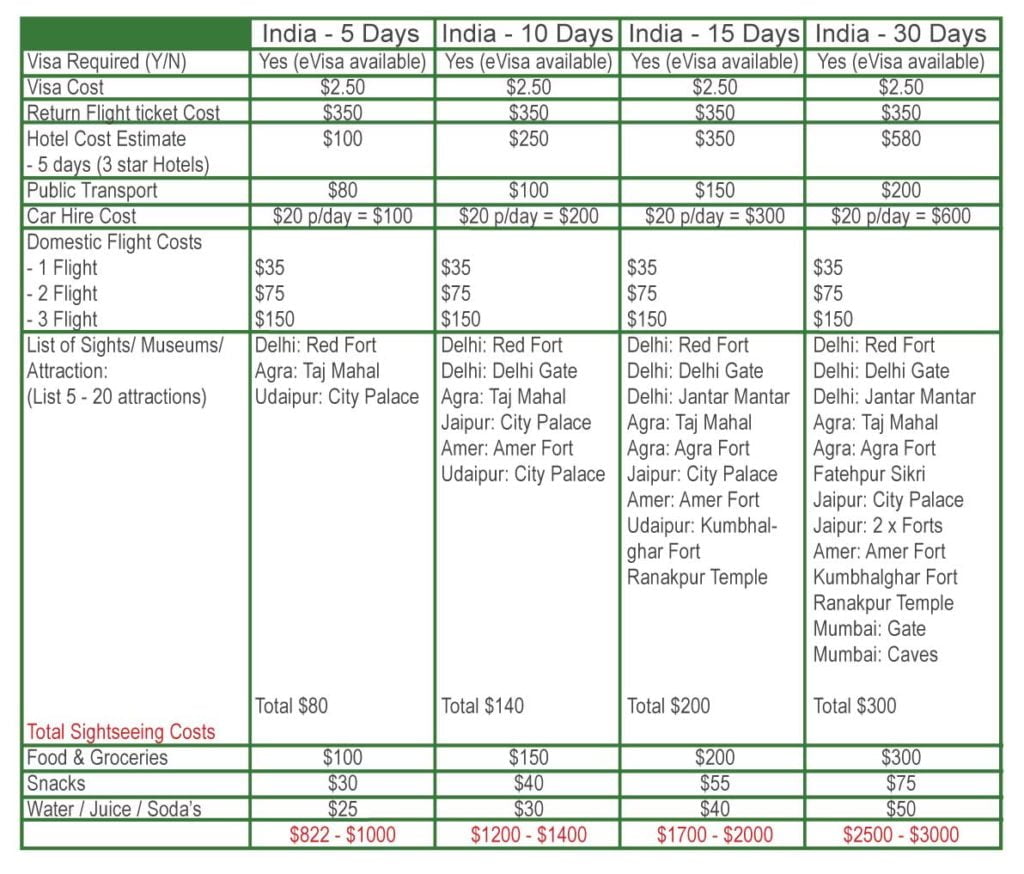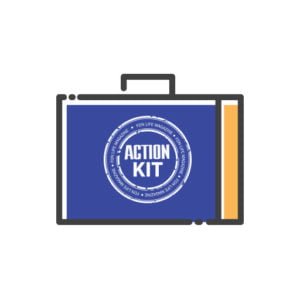
FINANCE >
Whenever planning a trip, one of the most frequent questions travelers ask is: “How much is this going to cost me? How much of the green stuff do I need?”
As travelers ourselves, we hear the ‘money’ question a lot. “Visiting North Italy seems like a great idea. We always wanted to visit. My Italian friends even suggested this 10-day itinerary for us but I don’t think we will be able to afford it.” Many such thoughts have caused people to rather stay at home — the headache of planning and budgeting for their travels to overwhelming.
Planning a trip, figuring out transport modes, visa requirements, establishing which hotels to stay at, activities for the kids and budgeting, can be quite daunting we know.
There are, though, various techniques you could employ to make things much easier the next time you think of traveling. To help you get started, we have put together this helpful guide to understanding the basics of budgeting for your next trip. Enjoy!
DOWNLOAD ACTION KIT >
STEP 1 - ESTABLISH YOUR MINIMUM AND MAXIMUM BUDGET FIRST
Before you even decide on a destination, establish the following:
- What is the minimum amount of money I have available for a trip? (Example: $750)
- What is the maximum I (we) are willing to spend if the amount I budget for this trip turns out to be insufficient? (Example: $900)
ACTION 1 – Draw three columns on a sheet of paper and write in the one column your minimum budget and in the other column, your maximum budget. Draw a line underneath.
See example:

ACTION 2 – Add the amounts together. Draw three columns on a sheet of paper and write in one column the group’s minimum budget and in the other column, the group’s maximum budget. Draw a line underneath.
See example:

STEP 2 – WHO IS GOING?
Will you be traveling with friends, family, colleagues?
Then it is important to know the following:
- How many people will be traveling together?
- How much is each person contributing to the trip?
- What is the minimum amount of money each person has available for the trip?
- What is the maximum each has available?
STEP 3 - ESTABLISH THE DESIRED DESTINATION
List five places on your sheet of paper. (If a group is traveling, establish the top five places as well.)
Example:
- North Italy
- South Africa
- India
- Thailand
- Dubai
ACTION 3

STEP 3 - ESTABLISH THE DESIRED DESTINATION
List five places on your sheet of paper. (If a group is traveling, establish the top five places as well.)
Example:
- North Italy
- South Africa
- India
- Thailand
- Dubai
STEP 4 - ESTABLISH THE DESIRED LENGTH OF TRAVEL
Determine how long you want to travel, for example:
- 5 Days
- 10 Days
- 20 Days
- 5 Weeks
- 1 Year
ACTION 5 & 6 – Add to the list any other desired columns.

STEP 5 – DETERMINE THE MINIMUM AND MAXIMUM TRAVEL COST FOR EACH
Determine the minimum and maximum travel costs to all five listed destinations by taking a sheet of paper (or Excel sheet) and establish the following information:
STEP 6 – WHICH OPTION BEST FITS YOUR BUDGET?
Once you have established the total cost to each destination, decide upon the one that best fits into your budget. (For our example have we chosen India)
STEP 7 – SOME FINAL CALCULATIONS
It is now time to analyze more in-depth what your expected expenses might be in this country. We recommend to rather over budget than under. Open up your Excel sheet, or draw the below columns on a sheet of paper to represent the number of days and the expenses associated with each length of stay in the country.
The below is just an example table, and does not represent actual expenses:

STEP 8 – BUDGETING FOR UNEXPECTED EXTRA’S
Emergencies, medical illness, or all kinds of other unexpected extra expenses can occur during a trip. Always have an emergency savings fund you can withdraw from in such situations. Budget around $10, $20 to $50 per day for each day you travel in a 3rd world country, while you might need anything from $60 to $500 per day in others.
STEP 9 – OTHER EXPENDITURES TO CONSIDER
Medical Aid
Some medical aid schemes provide coverage during international travels to various destinations. You will need to contact them to inform them of your trip beforehand. Alternatively, purchase travel medical insurance.
Travel Insurance
You may also opt to take out travel insurance, which you need to add as an extra expenditure to your budget.
STEP 10 – FINAL BUDGET NOTES
Once you have determined the amount you need to travel to your chosen destination, put your travel plans together.
- Organize Your Budget
I find compiling an Excel sheet often works best when I travel. It’s cheap, quick to access, and easy to manage.
Add the various columns we suggested above into a single Excel sheet, and title it: ‘Travel Budget YEAR.’
- Start Saving Now
Start saving well before your trip by creating your own ‘Travel Fund,’ and deposit into this separate savings account X amount every month. (A separate account is one of the best options. It’s better not to use your business or personal account for travel savings. When you don’t see the money, you won’t spend it.)
DON’T HAVE TIME TO DO THESE BASIC STEPS?
There are various companies or travel agencies that can help if you don’t have the time to plan or work out the exact costs of the desired trip. Just do a quick search online to find your local travel operators.
BUDGETING WHILE TRAVELING
STEP 11 - ALWAYS CALCULATE YOUR EXPENDITURE DURING A TRIP
It is very important to commit to doing some bookkeeping on a day-to-day basis – especially if you are on a tight budget. We recommend using an Excel sheet and keeping every slip or invoice. If you bought a bottle of water, ask for the slip. Paid for your hotel? Have the invoice emailed to you.
TOP TRAVEL BUDGET TIPS FOR FDNs
- Keep slips and invoices together.
- Fill the excel data sheet with information at the end of the day.
(I usually do it at the end of the day before dosing of for the night. This helps me establish how much more I have available to spend on my trip, and if I have to cut it short or not.) - Keep track of your expenses. This will help against overspending or using an already overused credit card. There are so many travel apps that can help and saves time.
- Actually, don’t usea credit card at all when you travel. Use your Travel Fund It’s pretty hard to make up for travel expenses if you overspend on a credit card.
- Alternatively, install a Travel Budget App.
Planning and budgeting for your trip don’t need to be a headache. Make use of technology, travel companies, or do it yourself by using our short guide above.
ENJOYED THIS ARTICLE?
Do you have any other tips or advice to share regarding travel planning and budgeting? Let us know in the comments below! We would love to hear from you.
SUBSCRIBE TO
FDN LIFE NEWSLETTER!
Join our mailing list to receive the latest news, information, and special offers.



